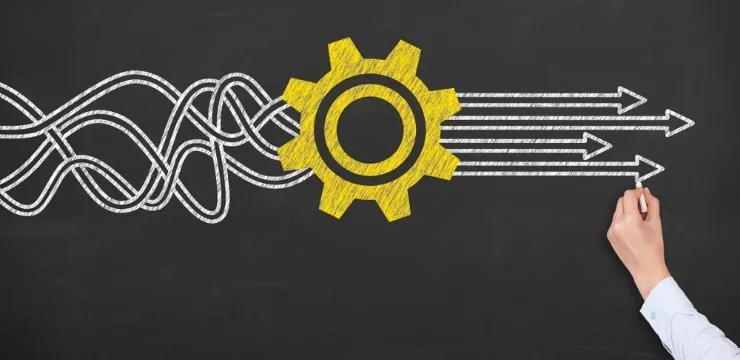
If I had a dollar for every time I’ve been asked, “what is change management process all about?” I’d be a very rich man.
I could give you the short answer. Or the long answer.
But neither would be 100% accurate. And by that I mean, the change management process is different for every CEO, organization, employee, or indeed change.
Despite this, too many change managers still hunt for a “plug in and play” change management template. As if such a thing exists!
However, I can share with you a framework to follow for designing your own change management process.
What is change management process: the short answer
When you ask the question, “what is change management process,” you’ll likely head to Prosci for an answer.
“The change management process is the sequence of steps or activities that a change management team or project leader follow to apply change management to a change in order to drive individual transitions and ensure the project meets its intended outcomes.” Prosci
So the change management process requires:
- Steps or activities to take place
- A change team or leader to manage them
- Individual transitions to occur
- Identified outcomes to be achieved
What is change management process: the longer answer
If you felt that the above answer was a bit underwhelming, no doubt you’re not alone.
Most people that ask, “what is change management process” are actually looking for a step-by-step roadmap to follow.
But the reality is that every change management process is as unique as the situation in which its applied.
(source: halopsychology.com)
Factors that influence the change management process
Different types of change
Change comes in all shapes and sizes. At an organizational level, we could discuss at length at least five different types of change:
- Organization wide change
- Transformational change
- Personnel change
- Unplanned change
- Remedial change
For each type, the question “what is change management process” needs different answers.
For example, new legislation could come into effect that affects your business. It might happen very suddenly as a result of some catastrophe or scandal. The change process for this sort of change will look very different to that of a personnel change. So will the impact.
Personal needs and learning styles
Some change leaders feel that the process of change is better understood through engaging activities and creative team exercises. Others might use an inspirational figurehead CEO to spearhead and communicate the value of change from the top down.
One thing is for certain. People’s training needs and learning styles differ. The more personalized your approach, the more impactful your change management process will be.
Today’s change managers have a plethora of techniques to assist them.
Force field analysis, culture mapping, change theories, onboarding and contextual learning aids — such a variety of tools can lead to a multitude of different change management processes.
Change theories and methodologies
Top down, bottom up, people or systems focused, there are many different change theories and frameworks out there.
They all have their strengths and weaknesses. Some are conceptual or adaptable, while others are extremely prescriptive. Often, the reality is that organizations need to use a combination of different change methodologies in conjunction with their own policies and procedures.
Google is a great example of this. What was their change management process? They invented it based on their own needs at the time.
To manage the restructure that came with the introduction of Alphabet as its parent company, Google studied classic theories like Lewin’s and Kotter’s. Then eventually, they came up with their own.
Google’s model looked like this:
Why – The reason for the change
What – The vision for the change
Who – Those impacted
How – How the change will be executed
“To thrive, companies must be open to change, and equally open to tweaking the way they approach change management.” Google re:Work
How to design your change management process
The key to designing your change management process is knowing where to start. Here’s a useful framework to follow.
STEP 1
Research change management theories and methodologies. Here are six of the best.
STEP 2
Clarify what type of change(s) you need to manage.
STEP 3
Review and define the particular culture and needs of your organization. This includes leadership styles and receptivity to change.
STEP 4
Decide which change theory or model will most suit the situation. Is there are combination of two or more models that will work better, or can you invent your own?
STEP 5
Identify what tools and activities will best meet your communications, training, adoption, and measurement needs.
By following these five steps, you’ve made the first challenging move towards designing your own change management process. By using a personalized approach, you’re setting yourself up for success and a great return on your investment.
WalkMe Team
WalkMe spearheaded the Digital Adoption Platform (DAP) for associations to use the maximum capacity of their advanced resources. Utilizing man-made consciousness, AI, and context-oriented direction, WalkMe adds a powerful UI layer to raise the computerized proficiency, everything being equal.




